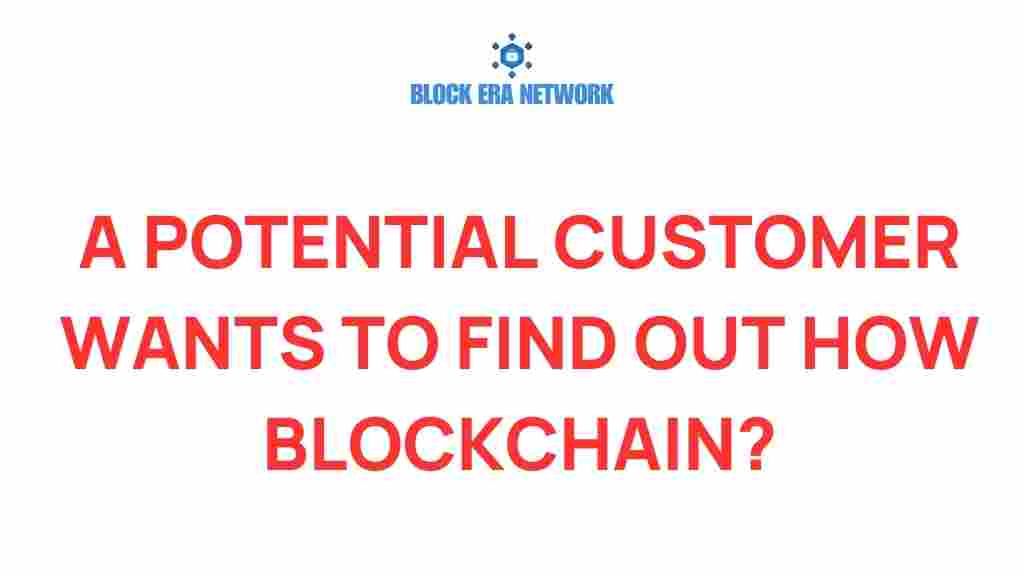Unveiling the Mysteries: How Blockchain Transforms Industries
In recent years, blockchain technology has emerged as a groundbreaking innovation that promises to revolutionize various industries. From finance to healthcare, the applications of this decentralized system are vast and varied. As we explore the intricacies of blockchain, we will delve into how it drives disruption, enhances security, and promotes transparency. This article will guide you through the transformative power of blockchain and its implications for the future of business and society.
The Essence of Blockchain Technology
At its core, blockchain is a digital ledger that records transactions across multiple computers in a way that the registered transactions cannot be altered retroactively. This structure ensures that every transaction is secure, transparent, and immutable. Here are the fundamental characteristics of blockchain technology:
- Decentralization: Unlike traditional databases controlled by a single entity, blockchain distributes data across a network of computers.
- Transparency: All participants in the network can access the same information, promoting trust and accountability.
- Security: Advanced cryptographic techniques protect data from unauthorized access and tampering.
- Immutability: Once a transaction is recorded, it cannot be changed, ensuring a reliable record.
The Impact of Blockchain on Various Industries
Now, let’s examine how blockchain is transforming different industries through innovation and disruption.
1. Financial Services
The financial sector is arguably the most affected by blockchain technology. Traditional banking systems often involve middlemen, leading to delays and higher costs. Blockchain streamlines processes by enabling direct transactions between parties.
- Cryptocurrencies: Digital currencies like Bitcoin and Ethereum use blockchain to facilitate secure peer-to-peer transactions.
- Smart Contracts: These self-executing contracts automatically enforce agreements without intermediaries, reducing the risk of fraud.
- Cross-border Payments: Blockchain can significantly lower transaction fees and processing times for international money transfers.
2. Supply Chain Management
In the realm of supply chain management, blockchain enhances traceability and accountability. Companies can track products from origin to consumer, ensuring quality and compliance.
- Provenance Tracking: Consumers can verify the source of products, promoting ethical practices.
- Reduced Fraud: Blockchain minimizes counterfeit goods by providing a transparent history of transactions.
- Efficient Logistics: Real-time data sharing allows for better inventory management and reduced operational costs.
3. Healthcare
In healthcare, blockchain technology holds the potential to secure patient data and streamline administrative tasks.
- Patient Records: Secure and immutable patient records enhance confidentiality and access to medical history.
- Drug Supply Chain: Blockchain can verify the authenticity of pharmaceuticals, combating counterfeit medications.
- Clinical Trials: Transparency in clinical trial data increases trust in pharmaceutical research.
4. Real Estate
The real estate industry can benefit from blockchain through simplified transactions and enhanced security.
- Smart Contracts: Automating property transactions reduces the need for intermediaries.
- Transparent Ownership: Blockchain provides a clear and accessible history of property ownership.
- Fractional Ownership: Investors can purchase shares of properties, democratizing real estate investment.
How Blockchain Works: A Step-by-Step Process
The functionality of blockchain may seem complex, but it can be broken down into a simple step-by-step process:
- Transaction Initiation: A user initiates a transaction, which is then transmitted to the network.
- Validation: Network participants (nodes) validate the transaction using consensus algorithms.
- Block Creation: Once validated, transactions are grouped into a block.
- Chain Addition: The new block is added to the existing blockchain, ensuring all nodes update their ledgers.
- Completion: The transaction is complete, and both parties can see the updated record.
Troubleshooting Common Blockchain Issues
While blockchain technology offers numerous benefits, challenges do arise. Here are some common issues and how to address them:
- Scalability: As the number of transactions increases, the blockchain may slow down. Implementing layer two solutions can help mitigate this issue.
- Security Vulnerabilities: Although blockchain is generally secure, vulnerabilities can exist in the surrounding applications. Regular audits and updates are essential.
- Regulatory Concerns: Compliance with local regulations can complicate blockchain implementations. Engaging with legal experts can provide clarity.
The Future of Blockchain Technology
The future of blockchain technology is bright, with ongoing innovations and applications emerging across various sectors. Here are some trends to watch:
- Integration with AI: The combination of blockchain and artificial intelligence could lead to smarter, more autonomous systems.
- Increased Interoperability: Future blockchain solutions will focus on integrating different blockchain networks for seamless data sharing.
- Green Blockchain: As sustainability becomes a priority, eco-friendly blockchain technologies will gain traction.
As we move forward, industries that embrace blockchain technology will likely see transformative benefits, including enhanced security, improved transparency, and increased efficiency.
Conclusion
In conclusion, blockchain technology stands at the forefront of a significant shift across multiple industries. Its innovative capabilities promise to disrupt traditional systems, offering unprecedented levels of security and transparency. As more organizations recognize the potential of blockchain, we can expect to witness a future where blockchain becomes an integral part of our everyday lives. For more insights on blockchain and its applications, check out this comprehensive resource.
As we continue to explore the depths of blockchain technology, it’s crucial to stay informed and adapt to the evolving landscape of innovation. Together, we can unlock the full potential of blockchain and shape a more secure and transparent future.
This article is in the category Blockchain Basics and created by Block Era Network Team
